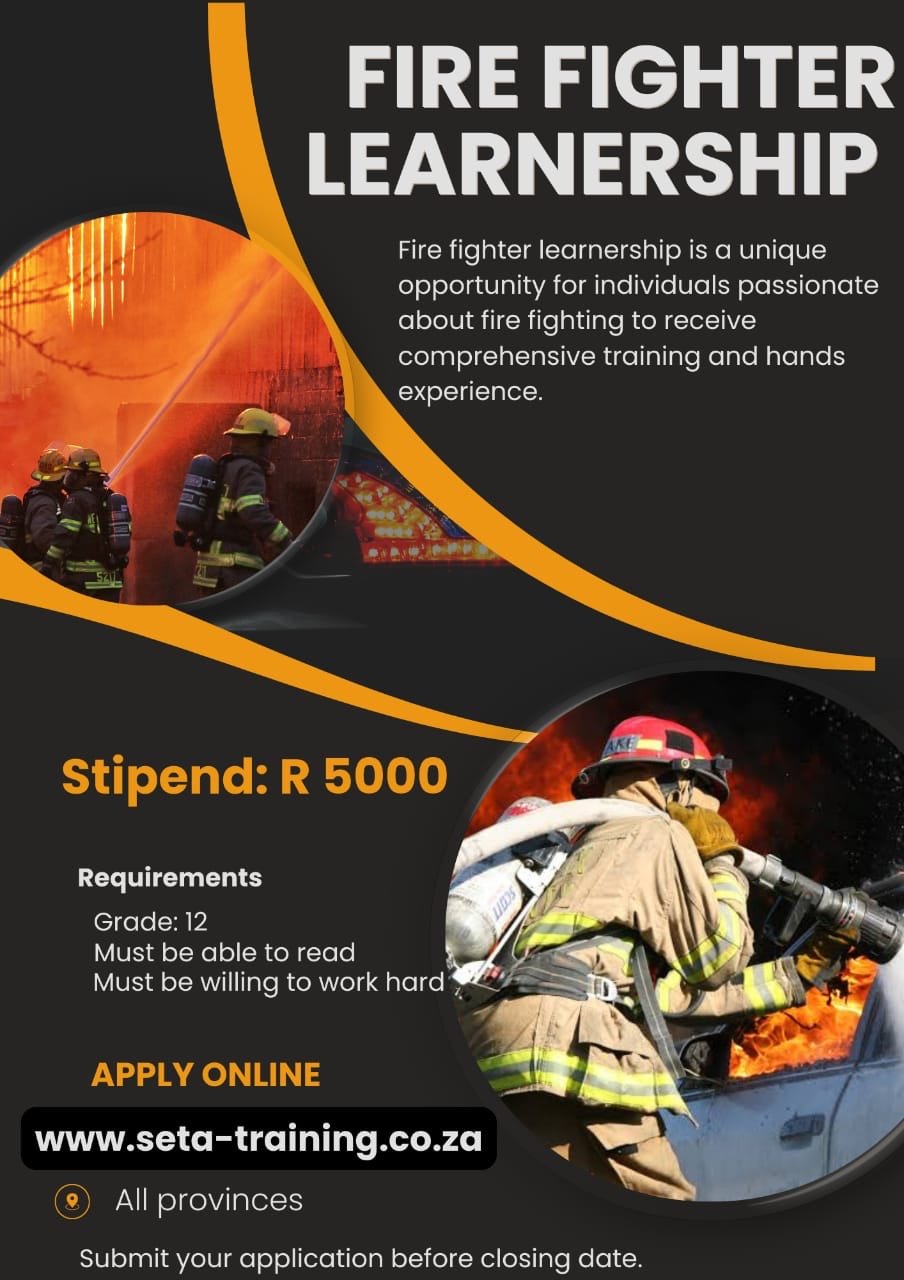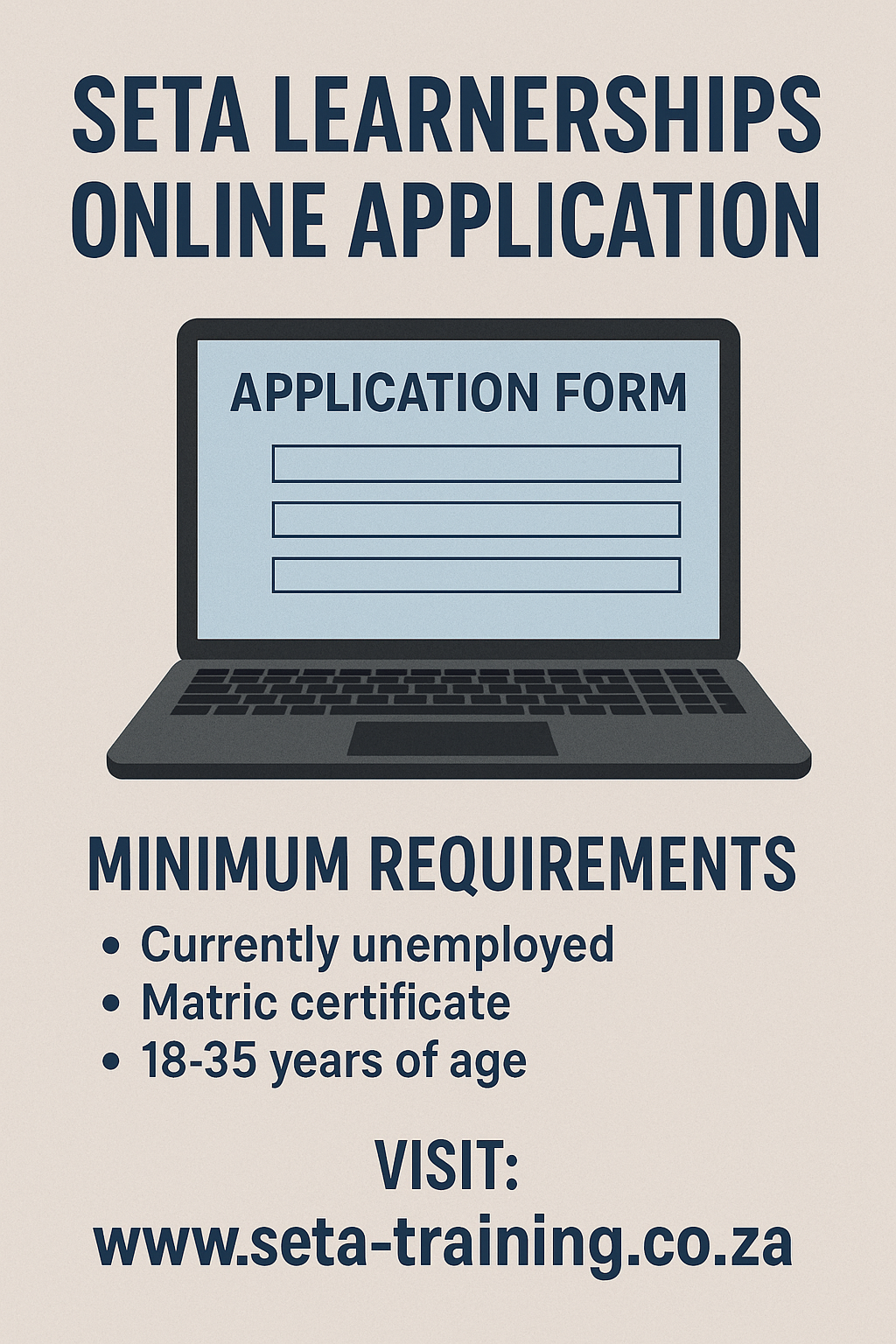If you have ever dreamed of becoming a fire fighter, then a SETA fire fighter learnership can be the perfect starting point for your career. Firefighting is more than just putting out flames—it is about saving lives, protecting communities, and working as part of a skilled emergency response team. With South Africa facing challenges such as shack fires, wildfires, and industrial accidents, the demand for professional fire fighters continues to grow.
In this comprehensive guide, we will explain everything you need to know about how to apply for a SETA fire fighter learnership. From eligibility requirements and the application process to tips for standing out as a candidate, this article will provide step-by-step insights to help you secure your spot in the program.
What is a SETA Fire Fighter Learnership?
A learnership is a structured training program introduced by the Sector Education and Training Authorities (SETAs) in South Africa. These programs combine theoretical classroom learning with on-the-job training. For fire fighting, a SETA learnership is specifically designed to equip learners with the necessary skills, knowledge, and practical experience required to serve in fire and rescue services.
The learnership usually leads to a National Qualifications Framework (NQF) registered qualification, often at NQF Level 4 or higher, depending on the program. Once completed, participants will be qualified to work as fire fighters in municipalities, airports, industrial facilities, and emergency services departments.
Why Choose a Fire Fighter Learnership?
Firefighting is a career that demands courage, discipline, and resilience. By enrolling in a SETA-accredited fire fighter learnership, you gain several benefits:
- Free Training: Most learnerships are fully funded by SETA or partnering employers, meaning you don’t need to pay tuition fees.
- Stipend Provided: Learners usually receive a monthly stipend, which helps cover transport or daily expenses.
- National Qualification: You earn a recognized qualification that improves employability across South Africa.
- Practical Skills: You gain real experience in fire stations, learning how to handle fire equipment, conduct rescues, and manage emergencies.
- Career Pathway: After qualifying, you can pursue permanent employment or specialize further in advanced firefighting, emergency medical response, or disaster management.
Who Can Apply for a SETA Fire Fighter Learnership?
To apply for a fire fighter learnership, you must meet certain minimum requirements. While specific criteria may differ depending on the training provider or municipality, most programs require the following:
- Education: A Grade 12 certificate (matric) with passes in Mathematics, English, and Physical Science is often preferred.
- Age: Applicants are usually between 18 and 35 years old.
- Citizenship: You must be a South African citizen with a valid ID.
- Health & Fitness: Firefighting is physically demanding, so candidates must pass a medical exam and physical fitness test.
- Clear Criminal Record: Most institutions require a police clearance to ensure candidates have no serious convictions.
- Language Skills: Good communication skills in English or other South African languages are essential.
How to Apply for a SETA Fire Fighter Learnership
Applying for a SETA-accredited fire fighter learnership requires careful preparation. Follow the steps below to maximize your chances of success:
1. Research Available Learnerships
Visit official websites such as:
- Local municipalities (e.g., City of Johannesburg, City of Cape Town, Ekurhuleni Metropolitan Municipality).
- Airports Company South Africa (ACSA) for airport fire and rescue learnerships.
- Government portals like the Department of Labour and SETA websites.
You can also check job portals such as Indeed, Careers24, or LinkedIn for advertised learnership opportunities.
2. Prepare the Required Documents
Before applying, gather the following:
- Certified copy of your South African ID.
- Certified copies of matric certificate or other qualifications.
- A detailed CV with your contact details and achievements.
- Proof of residential address (sometimes required).
- Medical certificate (if requested).
Make sure all copies are recently certified (not older than three months).
3. Complete the Application Form
Each municipality or training provider will provide an official application form. Fill it out carefully, ensuring accuracy in your personal details. Incomplete or incorrect forms may lead to disqualification.
4. Submit Your Application
Applications can usually be submitted via:
- Online portals (if provided).
- Hand-delivery at the municipality’s HR offices.
- Email submissions (ensure documents are in PDF format).
Always check the closing date and submit your application before the deadline.
5. Prepare for Assessments and Interviews
Shortlisted candidates are often invited to:
- Physical fitness tests (running, push-ups, strength tests).
- Medical assessments to confirm your health status.
- Written tests or interviews to evaluate communication and problem-solving skills.
6. Wait for Selection Results
Successful candidates will be notified via phone, email, or official notices. Once accepted, you will sign a learnership agreement that outlines your responsibilities, stipend, and duration of the program.
Duration of the Learnership
A fire fighter learnership typically lasts 12 to 24 months, depending on the training provider. During this period, learners alternate between theoretical classes and practical training at fire stations or emergency sites.
What You Will Learn in the Program
The learnership curriculum usually covers:
- Fire behavior and combustion.
- Fire prevention and safety measures.
- Rescue operations (vehicle, structural, and water rescues).
- Handling hazardous materials.
- Emergency medical first aid.
- Communication and teamwork in emergencies.
- Operating firefighting equipment and vehicles.
By the end of the program, you will be equipped with both technical knowledge and practical competence.
Tips for a Successful Application
- Stay Updated: Regularly check municipal websites and career portals for new openings.
- Be Physically Fit: Start exercising early to prepare for the fitness tests.
- Write a Strong CV: Highlight leadership skills, teamwork, and any community involvement.
- Apply Early: Submit your application well before the closing date to avoid last-minute issues.
- Follow Instructions: Each learnership has unique requirements, so read the advertisement carefully.
- Stay Positive: Competition is tough, but persistence pays off.
Career Opportunities After Completion
Once you complete your learnership, you can pursue careers such as:
- Municipal Fire Fighter in local government.
- Airport Fire Fighter with ACSA.
- Industrial Fire Fighter in refineries, factories, or mining companies.
- Emergency Medical Responder with additional training.
- Disaster Management Officer in government departments.
Frequently Asked Questions (FAQs)
1. Do I need money to apply for a fire fighter learnership?
No. Learnerships are usually free, and you may even receive a stipend during training.
2. Can I apply without matric?
Most programs require at least a matric certificate, but some may consider Grade 11 learners with strong results in Mathematics and Science.
3. How much is the stipend?
The stipend varies but can range from R2,500 to R4,000 per month, depending on the SETA and municipality.
4. Can women apply?
Yes! Firefighting is open to both men and women, as long as they meet the fitness and medical requirements.
Final Thoughts
A SETA fire fighter learnership is a golden opportunity for South African youth who want to build a rewarding career in public service. Not only does it provide professional training and a recognized qualification, but it also opens doors to permanent employment in various emergency response fields.
If you meet the requirements, gather your documents, and apply with confidence. Remember, firefighting is not just a job—it’s a calling to serve and protect communities. By taking this step, you are investing in your future while making a difference in the lives of others.
So, keep an eye on new learnership announcements, prepare yourself physically and mentally, and take the leap into this exciting and noble profession.
Contact Information
Telephone: +27 10 344 5000
Fax: +27 11 788 5092
Physical Address:
Sasol Place
50 Katherine Street
Sandton, South Africa, 2196
Postal Address:
PO Box 5486
Johannesburg, South Africa

